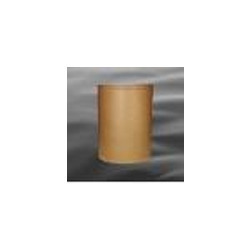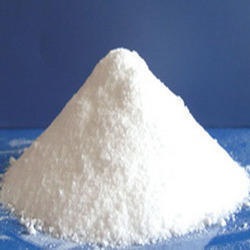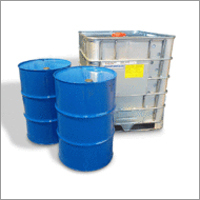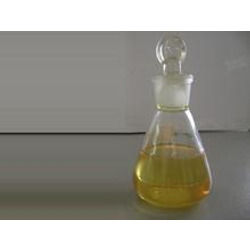2-Ethylhexanoic Acid
2-Ethylhexanoic Acid Specification
- CAS No
- 149-57-5
- Smell
- Characteristic, mild odor
- Ph Level
- 2.5 3.5 (1% solution)
- Structural Formula
- CH3(CH2)3CH(C2H5)COOH
- Product Type
- Organic Acid
- Shape
- Liquid
- Storage
- Store in cool, dry, well-ventilated area away from direct sunlight
- Melting Point
- -59 C
- Application
- Intermediate in chemical synthesis; raw material for metal salts; stabilizer for PVC; lubricants; plasticizers
- Density
- 0.903 Gram per cubic centimeter(g/cm3)
- Shelf Life
- 24 months if stored in tightly closed containers
- Solubility
- Slightly soluble in water; soluble in organic solvents (ethanol, ether, chloroform)
- Poisonous
- Non-toxic under recommended usage
- Refractive Rate
- n20/D 1.429
- Other Names
- Octanoic Acid, 2-Ethyl-; 2-Ethylhexanoic Acid
- Grade
- Industrial, Technical
- Purity
- 99% (GC)
- Physical Form
- Liquid
- Usage
- Used in production of drying agents, plasticizers, synthetic lubricants, and surfactants
- Molecular Formula
- C8H16O2
- EINECS No
- 204-093-1
- Appearance
- Clear, colorless to pale yellow liquid
- HS Code
- 291590
- Molecular Weight
- 144.21 g/mol
2-Ethylhexanoic Acid Trade Information
- Minimum Order Quantity
- 10 Barrels
- Payment Terms
- Letter of Credit (L/C), Western Union, Paypal, Cash in Advance (CID), Cash Advance (CA)
- Supply Ability
- 100 Barrels Per Week
- Delivery Time
- 7 Days
- Sample Available
- Yes
- Sample Policy
- Sample costs shipping and taxes has to be paid by the buyer
- Main Export Market(s)
- Western Europe, Australia, North America, Eastern Europe, Middle East, Central America, South America, Asia, Africa
- Main Domestic Market
- All India
About 2-Ethylhexanoic Acid
2-Ethylhexanoic Acid
2-Ethylhexanoic Acid offered is also known by the chemical names of 2-ETHYLHEXANOIC ACID; 2-Ethylcaproic acid; 149-57-5; Hexanoic acid, 2-ethyl-; Ethylhexoic acid and others with molecular formula of C8H16O2 and molecular weight of 144.21144 g/mol. As a colorless to light yellow liquid having mild odor, it is slightly soluble in water as well as is also corrosive to metals and tissue. The product finds use for making of paint dryers and plasticizers. Its other properties include Hydrogen Bond Donor Count of 1, Hydrogen Bond Acceptor Count of 2, Rotatable Bond Count of 5, Exact Mass of 144.11503 g/mol and Monoisotopic Mass of 144.11503 g/mol.
"This particular price varies on daily basis. Please call and check for the latest price"
Specification
| Packaging Type | Drum |
| Physical State | Liquid |
| Usage | Domestic,Commercial,Industrial |
| Grade Standard | Technical Grade |
Versatile Chemical for Industrial Applications
2-Ethylhexanoic Acid is highly regarded in industrial settings for its adaptability. Its chemical properties make it essential as an intermediate in the manufacture of metal salts, drying agents, stabilizers for PVC, plasticizers, synthetic lubricants, and surfactants. Its combination of a high purity (99% GC) and reliability enhances its effectiveness in various manufacturing processes.
Safe Handling and Efficient Storage Recommendations
While 2-Ethylhexanoic Acid is classified as hazardous (Hazard Class 8), it can be safely managed by storing it in tightly closed containers in a cool, dry, well-ventilated area, away from direct sunlight. Its packing options include drum, IBC, or tanker formats, making it suitable for both small and large-scale industrial requirements while ensuring safe and efficient transport.
Physical and Chemical Properties
This clear, colorless to pale yellow liquid exhibits a mild, characteristic odor, with specific attributes such as a melting point of -59C, and a refractive index of 1.429 at 20C. The acid has a pH of 2.53.5 (at 1% solution), and its low vapor pressure makes it manageable in standard handling environments. Slight water solubility allows for selective application in synthesis and compounding.
FAQs of 2-Ethylhexanoic Acid:
Q: How is 2-Ethylhexanoic Acid typically used in industrial processes?
A: 2-Ethylhexanoic Acid serves as a raw material for the production of metal salts, stabilizers for PVC, lubricants, plasticizers, drying agents, and synthetic surfactants. Its versatility allows it to be incorporated at various stages of chemical synthesis and manufacturing.Q: What are the storage recommendations to ensure the shelf life of 2-Ethylhexanoic Acid?
A: To maintain its quality and effectiveness for up to 24 months, it should be stored in tightly closed containers in a cool, dry, well-ventilated area, away from direct sources of heat or sunlight.Q: When should appropriate safety measures be taken during the handling of 2-Ethylhexanoic Acid?
A: Because it is classified as a hazardous substance (Hazard Class 8, UN 3265), safety protocols must be observed at all times during transport, storage, and handling. Personal protective equipment and adherence to regulatory guidelines are recommended.Q: Where is 2-Ethylhexanoic Acid most commonly applied?
A: It finds widespread use in the chemical, plastics, and lubricant industriesespecially in the manufacturing of PVC stabilizers, plasticizers, metal soaps, and as an intermediate in synthesis for various specialty chemicals.Q: What is the process for using 2-Ethylhexanoic Acid in PVC stabilization?
A: 2-Ethylhexanoic Acid is employed as a precursor to metal salts that act as stabilizers in PVC manufacturing. These metal salts help improve the thermal stability and durability of PVC products.Q: What benefits does 2-Ethylhexanoic Acid provide in lubricant production?
A: Its use in synthetic lubricants delivers enhanced thermal stability, corrosion resistance, and improved performance at elevated temperatures due to its specific molecular structure and purity.

Price:
- 50
- 100
- 200
- 250
- 500
- 1000+
More Products in Cleaning Chemicals Category
Diatomaceous Earth Powder
Price 50 INR / Kilograms
Minimum Order Quantity : 1 Kilograms
Storage : Room Temperature
Melting Point : About 1,700C
Shape : Amorphous
Poisonous : NO
Sodium Cyanide Powder
Price 575 INR
Minimum Order Quantity : 25 Kilograms
Storage : Other, Store in tightly sealed containers, in cool, dry, and wellventilated areas, away from acids
Melting Point : 563C
Shape : Powder
Poisonous : Other, Yes, highly toxic
Liquid N Propanol
Price 27500 INR
Minimum Order Quantity : 1 Dram
Storage : Other, Store in cool, dry, wellventilated area, keep container tightly closed
Melting Point : 127C
Shape : Liquid
Poisonous : NO
Monoethanolamine
Price 85 INR
Minimum Order Quantity : 25 Kilograms
Storage : Other, Store in a cool, dry, wellventilated area away from incompatible substances
Melting Point : 10.5 C
Shape : Liquid
Poisonous : Other, Nonisonous
 English
English Spanish
Spanish French
French German
German Italian
Italian Chinese (Simplified)
Chinese (Simplified) Japanese
Japanese Korean
Korean Arabic
Arabic Portuguese
Portuguese Send Inquiry
Send Inquiry




 Send Inquiry
Send Inquiry Send SMS
Send SMS Call Me Free
Call Me Free
